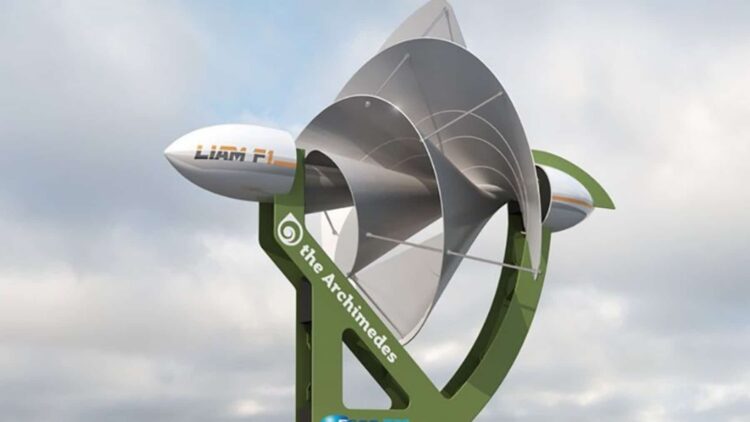However, when the world’s focus is to decrease the usage of non-renewable energy sources, the future of home energy generation seems pretty good. While homeowners’ ultimate clean power source has always been solar panels, innovations in wind power are the new kid on the block.
The most worthy of further development is the LIAM F1 UWT – a small wind turbine for urban noiseless conditions with a yearly yield of 1000-1500 kWh. This is the new advance in renewable energy solutions for residential places as they try to embrace renewable energy.
The rise of the silent wind turbine that fits perfectly in urban homes
The LIAM F1 UWT is the new wind turbine intended for installation in residential homes – a far cry from traditional loud wind turbines. This turbine was designed by a Dutch firm, The Archimedes, that deals with turbines suitable for use in the urban environment since space and aesthetics are always limiting factors.
For example, the LIAM F1 does not possess giant rotating blades compared to other turbines. Thus, it is small and quiet. This equipment is around 1.5 meters in diameter and weighs less than 100 kg. Therefore, it can be installed on the roof or in a small room.
This invention helps homeowners to generate electricity from wind without noise disturbance or the usual sight of large windmills, which may be unpleasant. The design concept is based on Archimedes’ spiral so that the turbine can be oriented to a specific wind direction. Therefore, it would be efficient, especially in urban areas with low wind speeds.
It can produce 1000-1500 kilowatt hours of power per year, which can supply power to most households for much of the year, depending on the wind speed.
Why homeowners should say goodbye to high electricity bills with this new wind turbine
The LIAM F1 UWT was designed with the urban environment as the target to overcome some problems typical of wind turbines. Wind energy has been one of the most efficient forms of renewable energy, but large wind turbines need a large area and are structures.
The LIAM F1 does away with this shortcoming by becoming a mini structure that can easily merge with the urban landscape without altering the city’s looks in terms of vision or environment.
This trend of having small and efficient turbines is an effect of the effort to expand the use of renewable energy sources, especially in densely populated regions. This means that homeowners can use wind energy by placing the turbines on the roofs of their houses. This does away with the need to acquire extensive pieces of land.
The district heating and cooling system of the LIAM F1 UWT also has the opportunity to reduce electricity bills. The wind turbine has the capability of generating up to 1500 kilowatt hours of energy per year and can be a revolution in power usage in homes.
In addition, the wind turbine is compatible with other renewable energy systems, such as solar systems. The correlation between wind and solar power means that homeowners can effectively enjoy the power of both systems and have a constant power supply.
If the weather is terrible, mainly windy, the turbine will create power; the solar panels will do the job if the sun is out. Fortunately, integrating these two strategies can significantly reduce the utilization of fossil energy and carbon emissions in households and in general.
A step towards a sustainable future powered by clean energy solutions
The development of the LIAM F1 UWT has been linked with renewable energy progress, which is expected to be disseminated in the future, particularly in Europe, since countries such as the Netherlands are dominant in renewable energy. Wind energy has been used in the Netherlands for a long time now.
The LIAM F1 shows that the Dutch can design functional, practical, sustainable technologies. Thus, as Europe gradually develops its infrastructure for renewable energy, technologies like the LIAM F1 wind turbine are vital to a sustainable world.
These small-scale turbines are preparing the world for a distributed generation system in which owners of homes and businesses can generate their power. This capability of producing clean energy locally makes it cheap and reduces the pollution levels of CO2 in the atmosphere, which is a significant problem of climatic change.
Out of all the methods through which homeowners have embraced renewable energy, the most common has been the solar power system. However, the LIAM F1 UWT silent wind turbine will soon be a real competitor in the renewable energy sector.
Due to its compactness, high utilization rate, and almost noiseless operation, it seems like an excellent solution for the modern city, providing homeowners with an opportunity to generate electricity and win the battle against global warming. As the world turns to clean and green approaches, the LIAM F1 technology is just a step closer to a cleaner environment.

